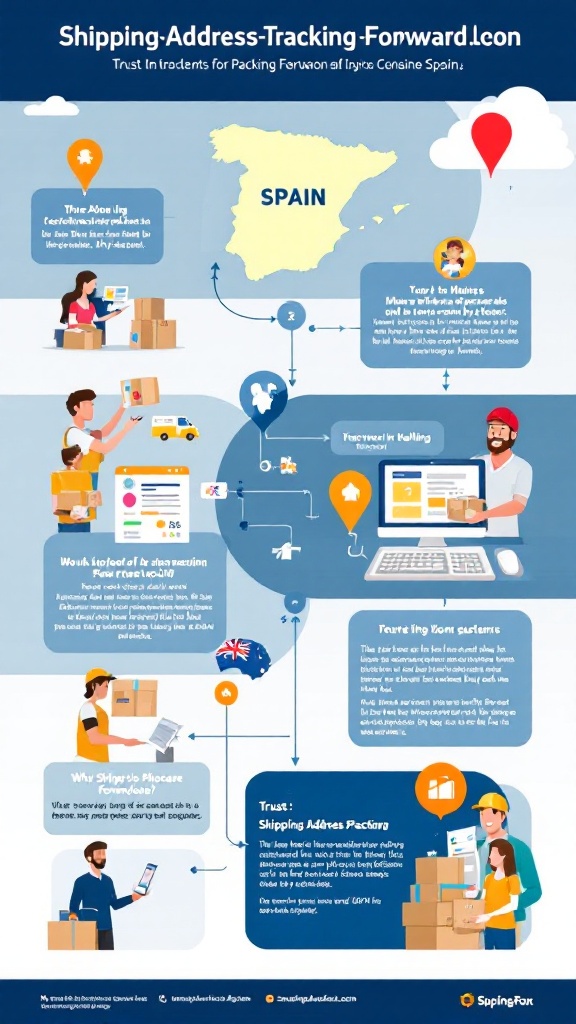¡Hola! Planning to ship goods internationally from Spain? Or maybe you’re an importer looking to bring products into Spain? Navigating the world of international shipping can feel like navigating the labyrinthine streets of Madrid on a foggy day. It’s complex, it’s full of potential pitfalls, and it requires a good map and a reliable guide. This post offers a Spanish perspective on the key considerations, regulations, and best practices for successful international shipping, helping you steer clear of costly mistakes and ensure your goods arrive safely and on time. We’ll break down the essentials, from understanding Incoterms to choosing the right shipping method, all with a focus on the Spanish market and its unique requirements. Let’s get started!
Understanding the Essentials: A Spanish Primer on International Shipping
International shipping from Spain, and indeed, any country, involves a series of crucial steps. The first and arguably most critical is understanding the terms of the trade, also known as Incoterms (International Commercial Terms). These define the responsibilities of the seller (exporter) and the buyer (importer) regarding the shipment, including who pays for what (transport, insurance, customs clearance, etc.) and the point at which the risk transfers from seller to buyer. Failing to clearly establish these terms can lead to disputes, delays, and unexpected costs. In the Spanish context, understanding the nuances of these terms, and how they relate to the customs regulations of both Spain and the destination country, is paramount.
Another essential aspect is selecting the appropriate shipping method. Options range from air freight, ideal for speed and smaller consignments, to sea freight, the most cost-effective choice for larger volumes. The choice depends on factors like the value of the goods, their fragility, the urgency of delivery, and the destination. Consider the transit times, insurance requirements, and the specific regulations of the destination country, bearing in mind that customs procedures can vary significantly, impacting delivery times.
Choosing a reliable freight forwarder is crucial. A good freight forwarder, familiar with Spanish regulations and international shipping complexities, can handle the logistics, documentation, customs clearance, and provide valuable advice. They’ll navigate the bureaucracy, track your shipment, and ensure compliance with all relevant laws. Look for a forwarder with experience in your specific industry and knowledge of the destination country’s import requirements. They can also assist with things like cargo insurance, which is highly recommended to protect your investment.
Key Considerations for Spanish Exporters and Importers
Documentation Dos and Don’ts for Smooth Sailing
Accurate and complete documentation is the backbone of successful international shipping. For Spanish exporters, this includes the commercial invoice, packing list, bill of lading (for sea freight) or air waybill (for air freight), export declaration, and any specific certificates required by the importing country. Incorrect or missing documents can lead to significant delays, penalties, and even the rejection of your shipment. It’s also crucial to understand the implications of different documentation procedures, such as the use of the Electronic Data Interchange (EDI) system, which facilitates the electronic exchange of information between businesses and customs authorities. This can significantly speed up the process, particularly for frequent exporters.
Importers into Spain must prepare similar documentation. This includes the commercial invoice, packing list, bill of lading/air waybill, and import declaration. The import declaration provides necessary details like the value of the goods, the country of origin, and the applicable duties and taxes. It’s essential to work with a customs broker in Spain to ensure compliance with Spanish customs regulations and to handle the import clearance process efficiently. This is particularly important considering Spain’s membership in the European Union (EU), which has specific rules regarding trade within the EU and with non-EU countries.
Remember that proper documentation isn’t just about fulfilling legal requirements; it also ensures the smooth flow of goods and reduces the risk of delays or disputes. Ensure your documents are in order, accurately reflecting the details of the shipment.
Here’s a quick guide to some key considerations:
- Incoterms: Understand the responsibilities of both buyer and seller.
- Freight Forwarder: Choose a reliable and experienced forwarder.
- Documentation: Ensure all documents are complete and accurate.
- Customs: Be aware of Spanish and destination country regulations.
Shipping Costs and Duty Calculations
Shipping costs are influenced by various factors, including the shipping method, the weight and dimensions of the goods, the distance traveled, and fuel surcharges. Obtaining accurate quotes from several freight forwarders is crucial to compare prices and find the best deal. Be aware of hidden costs, such as port charges, handling fees, and insurance premiums. Clearly understand the terms of payment and the currency exchange rates involved to avoid any surprises.
Calculating import duties and taxes can also be complex. The import duty rate depends on the Harmonized System (HS) code of the goods, which classifies products for customs purposes. The value of the goods, the country of origin, and any applicable free trade agreements (such as the EU’s agreements with other countries) will determine the final import duties and taxes. The Value Added Tax (VAT) is also applied to imported goods, and this should be included in the calculation. Working with a customs broker can help you accurately calculate these costs and ensure you comply with all relevant tax regulations.
| Category | Spanish Context | Key Considerations |
|---|---|---|
| Incoterms | Crucial for defining responsibilities in international trade. | Choose the term that best suits your situation. Consider the costs and risks involved. |
| Documentation | Essential for customs clearance in Spain and other countries. | Accurate invoices, packing lists, and bills of lading are necessary. |
| Freight Forwarder | Key for navigating Spanish customs and logistics. | Choose a reputable forwarder with experience in your industry. |
| Shipping Costs | Various costs depending on method, weight and distance. | Get multiple quotes, and clarify payment terms and currency exchange rates. |
By understanding these principles and applying them within the context of the Spanish market, you can navigate the complexities of international shipping with greater confidence and success. Good luck, and ¡buena suerte!




